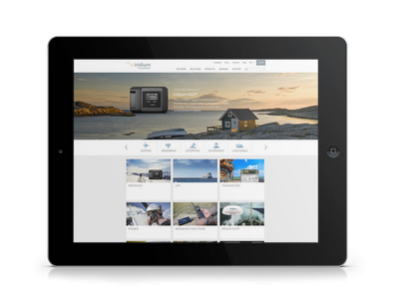Everyone knows that content management systems are great for blogs, ecommerce sites, and simple website management. But there are a number of other things you can use a CMS for beyond the basics.
In this article, we look at 5 things that you might not know a CMS can do.
1. Create personalized digital experiences

Personalization is one of the best ways that we know to drive conversions and customer engagement online. Whether it’s a huge, complex structure like Target’s efforts or just a simple personalized email, it’s been proven again and again to be successful.
For example, when you’re browsing Amazon, and they have those ‘Customers Who Bought This Item Also Bought…’’ ads come up? Those are really good bits of personalization.
A CMS can help you kick your personalization up a notch. For example, Advantage CSP lets users create profiles and manage them, so they can log in and experience an entirely customized site. It also means that you can have widespread member/admin users.
One example of a site that leverages this functionality is Mylan Health Coach, where users and dietitians both can log in to track progress, results, and personal health plans and goals.
2. Manage multiple sites from one interface
The push towards
single-functionality means that we think more and more microsites/specific websites are going to be cropping up in the near future.
Of course, the age-old problem of content always comes up – managing one body of content is hard enough, let alone multiple disparate bodies.
Well, CMS to the rescue!
Content management systems can actually be used to manage and distribute content across multiple sites and domains from one place, which neatly solves the multiple management problem.
With the aid of CMS, you can deliver an awesome user experience to multiple distinct groups with an insignificant increase in content management time - just tick a few boxes to control which content appears on which site(s), and you’re done.
For example, imagine a university website. It’s catering to:
- Current students
- Prospective students
- Alumni
- Existing faculty
- Prospective faculty
- Administrators
Plus, they have to include financial details and integration with financial services.
So the question is: what do you put on the home page?
There’s really no right answer. It depends on which group you’re catering to.
Microsites can help alleviate that strain of multiple user groups and create a more customized experience for the end users – without the compromise.
3. Develop and manage extranets

First,
extranets are just intranets (internal networks within a company) that some outside people can access, for example vendors, suppliers, and partners. They’re usually used in enterprise companies, and they’re usually associated with horrendous IT bills.
But CMSes can also be used as extranets, in some cases.
The core problem with most extranets, and the reason that they’re often complicated, is that there needs to be clear delineations between company documents that are available to everyone and company documents that are only available to the company.
For example, imagine that you ran a chain of restaurants. You might want an intranet system to keep track of all your restaurants, with your managers logging in deliveries, profits, and invoices.
You might also want to give some vendors access to your order sheets without having to export them to make deliveries easier.
An extranet system could help by keeping each of these areas separate: the managers section and the vendor sections. And with the right CMS, it can be extremely easy to implement separate back-end views to separate those user groups.
In fact, we built an extranet using Advantage CSP for Iridium that does exactly this.
Our system lets Iridium provide secure access to key employees and partners without compromising any sensitive data or documents, all from within the familiar framework of a CMS.
4. E-learning and e-tools
E-learning and e-tools present huge data problems for organizations. They need a system that’s robust enough to handle:
- Distributing assignments to the correct users at the correct times
- Capturing assignment data (including any interactive data)
- Capturing and delivering completed assignments
- Matching assignments to grades and matching grades to students
- Tracking students’ progress through a program
These of course are just for one class, let alone an entire program. The challenges are immense, and there are really two ways they can be solved.
First, an educational institution can build a completely separate app for their e-learning. While this does solve the problem, it presents lots of other issues including a high build cost and continuing updates and maintenance.
Or second, they can use a CMS. A robust CMS is already geared towards e-learning anyways, since most of the challenges that e-learning products face are centred around delivering and tracking data, tasks which are uniquely suited to a CMS.
A CMS can also be far more flexible in terms of growth, where building new modules to accommodate needs is much easier then adding to a potentially complicated app.
5. Project management
And finally, project management! WordPress actually has a plugin specifically for PMs to turn their WordPress interface into a classic management dashboard like Asana or Basecamp.
It’s a no-brainer really – lots of users, different tiers of access, document sharing and management, timelines, KPIs, and checkpoints: these are all things that good project management requires and CMSs excel at delivering.
Conclusion
With the
extensive selection of plugins for open source platforms like WordPress or Drupal and a full range of customization available with proprietary CMSes, the world is your oyster when it comes to what a CMS can do.
